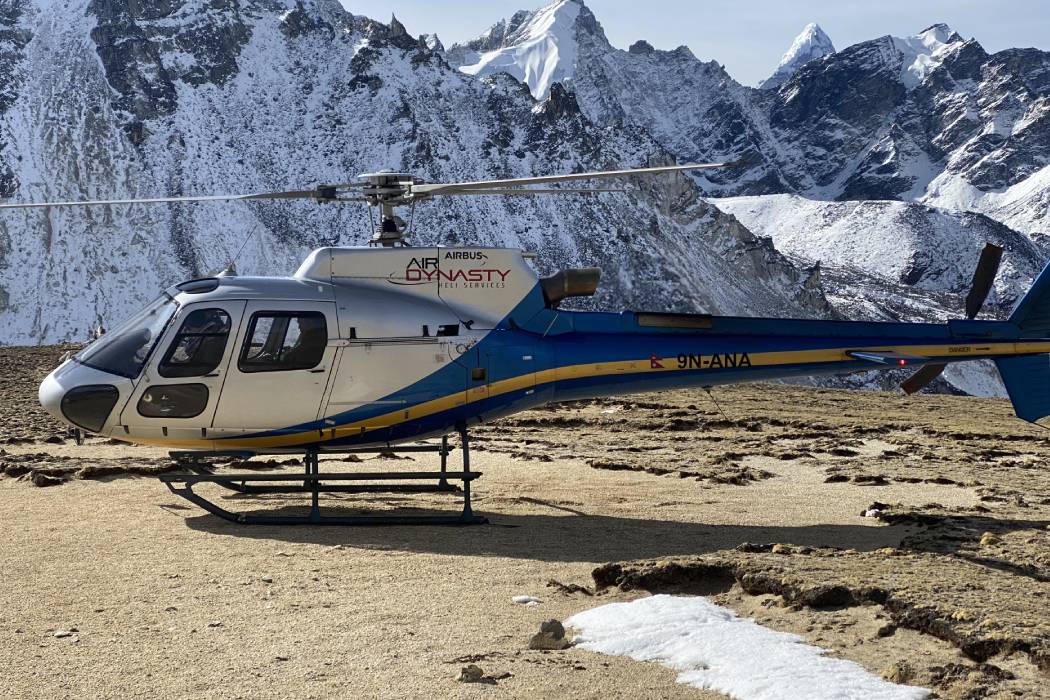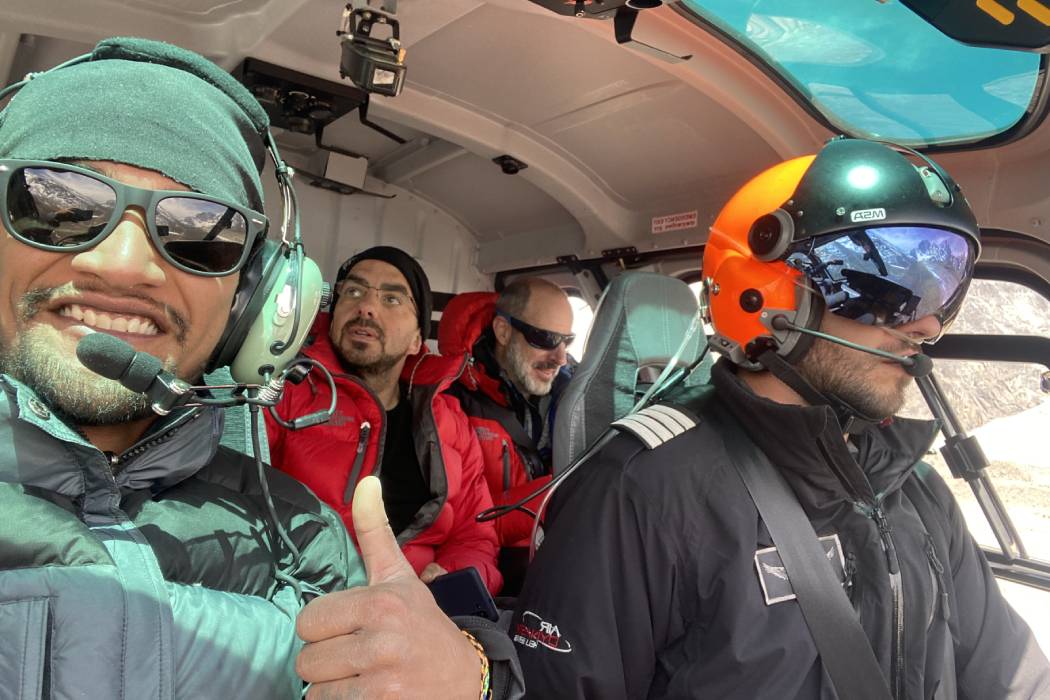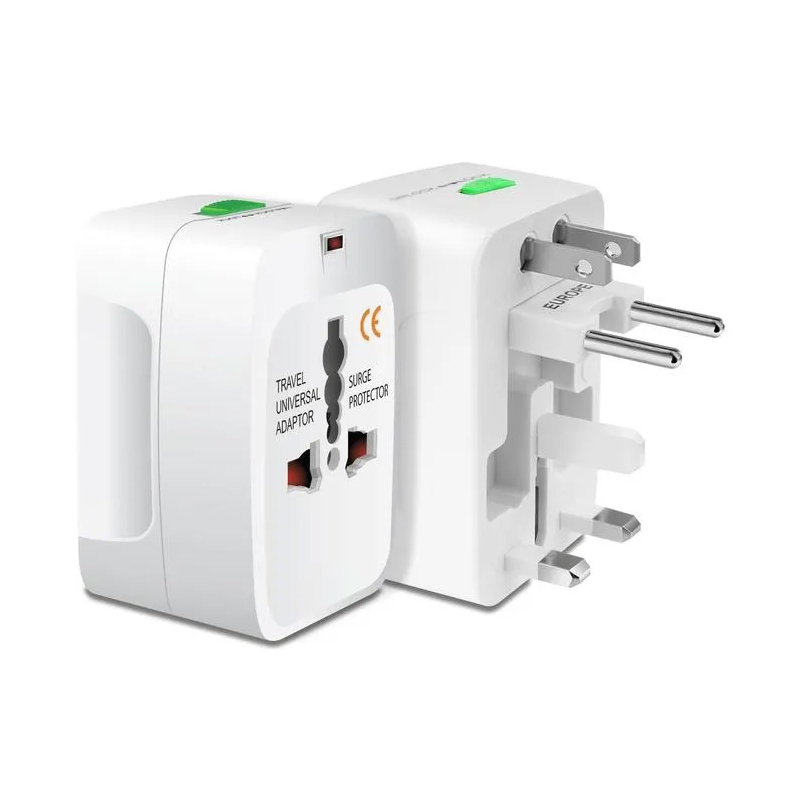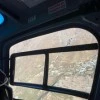Why Choose an Everest Base Camp Helicopter Tour with Landing?
The helicopter Everest Base Camp tour is designed for travelers who want to enjoy panoramic Himalayan views and land at iconic spots such as Kala Patthar or Everest View Hotel. These landing points offer unmatched scenery—views that trekkers normally achieve only after 8–12 days of strenuous walking.
Here’s why thousands of visitors now prefer the helicopter tour over trekking:
Time Efficient: Complete the entire experience within 4–5 hours.
Physically Easy: No need for acclimatization or long trekking days.
Luxurious & Comfortable: Modern helicopters, safe landings, and high-altitude-friendly systems.
Photographer’s Dream: Capture the Khumbu region from aerial and ground perspectives.
Safe & Professional: Highly trained pilots experienced in high-altitude flights.
For travelers with a tight schedule or mobility challenges, the Everest Base Camp Helicopter Tour with Landing offers an incredible opportunity to explore the highest mountains without physical strain.

What Exactly Is the Everest Base Camp Helicopter Tour with Landing?
The helicopter tour begins from Kathmandu Domestic Airport early in the morning. After a safety briefing and boarding, your journey takes you across lush hills, terraced villages, and finally deep into the Himalayan range. You’ll have close-up views of mountains such as:
Mount Everest
Lhotse
Nuptse
Ama Dablam
Thamserku
Pumori
Cho Oyu
Makalu (from a distance)
What makes this tour truly special is the landing experience. Unlike flyover-only tours, this package includes stepping out of the helicopter at high-altitude viewpoints, taking photographs, and enjoying breakfast with the Himalayas spread out before you.
The common landing spots include:
• Kala Patthar (5,545 m) – Iconic Everest Viewpoint
This is the ultimate highlight of the journey. Kala Patthar offers the closest and clearest view of Mount Everest—better than what you see from Base Camp itself. Trekkers normally hike for days to reach this point, but your helicopter makes it possible within minutes.
• Everest View Hotel (3,880 m) – Scenic Breakfast Stop
Famous as "the highest located luxury hotel in the world," the Everest View Hotel is home to breathtaking panoramas and a peaceful ambience. You can enjoy breakfast while looking at Ama Dablam, Everest, and other peaks.
• Lukla Airport (2,860 m) – Refueling Stop
Known as one of the most thrilling airports on the planet, Lukla is the gateway to the Everest region. The helicopter stops here briefly for refueling.
These landings provide the perfect combination of aerial sightseeing and on-ground experience.
Why the Everest Base Camp Helicopter Tour Is Worth Booking
1. Saves 10–12 Days of Trekking
The traditional Everest Base Camp trek takes around 12 days. The helicopter tour completes the experience in hours.
2. Perfect for All Age Groups
Suitable for:
Seniors
Families with children
Luxury travelers
Photographers
Business travelers
3. Avoid Risks of Altitude Sickness
Since you don’t sleep at high altitudes, the risk of severe AMS is greatly reduced.
4. Ideal for Time-Constrained Travelers
If you are in Nepal for a short holiday, this tour helps you experience Everest without any physical stress.
5. Luxury, Comfort & Safety
Helicopters used:
Airbus H125 (AS350)
Ecureuil series
These are designed for high-altitude performance.
6. Best Aerial Photography Platform
The clear skies of Nepal offer unmatched photographic conditions.
What is the best season and time to visit Everest base camp by helicopter?
The best season and timing for an Everest Base Camp Helicopter Trip are usually determined by the weather and conditions in the Everest Region. The walking and helicopter trip seasons are primarily in the spring and autumn. More information on each season can be found below:
From March until May, the finest time to visit Everest Base Camp by Helicopter is in the spring. Clear skies and warmer temperatures characterize the weather. The spring season provides excellent visibility for taking in the breathtaking mountain views. Lower-elevation rhododendron woodlands are in full bloom, contributing to the visual charm.
From September until November, autumn is another excellent season for Everest Base Camp Helicopter Flights. The weather is normally clear, with crisp, blue skies. The weather is pleasant, making it perfect for trekking and helicopter rides. The vistas of the Himalayan peaks, especially Mount Everest, are usually spectacular.
While these are the principal reasons for Everest Helicopter Tours, weather conditions might vary from year to year, and there is always the possibility of unexpected changes in high-altitude weather. Before arranging your trip, make sure to check with local tour operators and meteorological agencies for the most up-to-date weather information.
Furthermore, bear in mind that the popularity of these tours might result in high demand during peak seasons, so book your helicopter tour well in advance to reserve your seat.
How does the helicopter tour of Everest begin and end?
The helicopter journey to Everest Base Camp begins and ends in Kathmandu. Let's go over the helicopter tour in detail.
We begin our journey by driving to Kathmandu's international airport and then inside the domestic terminal. We proceeded to the stated terminal after completing the check-in and security procedures. Then we board the shuttle bus, drive to our helicopter, fasten our seat belts, and fly from Kathmandu to Lukla on a helicopter tour.
We occasionally stop in Lukla for refueling before continuing our journey to Mount Everest's Base Camp, where we fly over Nepal's roaring epic Himalayas and above the Khumbu Glacier.
We arrive at Kalapatthar or Everest Base Camp after completing the half-flyover, depending on the pilot and the weather. We have around 10–15 minutes after landing to snap photos and enjoy the scenery. After landing at Everest Base Camp, or Kalapatthar, we fly to Namche over the Khumbu Glacier, complete our full loop, and then fly over from Tengboche, Dingboche, and Pheriche towards the Everest View Hotel in Namche. Spend some time in Namche and have breakfast at the Everest View Hotel, which is at an elevation of 3880 meters.
After finishing breakfast, we travel back to Kathmandu, where holiday tour Nepal personnel will meet the visitors at the airport and drop them off at the destination of their choice. Is the helicopter excursion to Everest Base Camp worthwhile? The value of an Everest Base Camp Helicopter Tour is determined by your personal choices, your budget, and the type of experience you seek.
Here are some things to think about while deciding whether it's worthwhile for you.
Benefits of taking a helicopter tour with landing at Everest
- Spectacular Scenery: The tour provides stunning vistas of the Himalayas, including Mount Everest, and is a once-in-a-lifetime opportunity for many.
- Time-Saving: It gives an easy approach to reaching Everest Base Camp and appreciating the grandeur of the region without committing to a lengthy journey that can last weeks.
- Comfort and Luxury: Compared to trekking, helicopter excursions provide a more comfortable and luxurious approach to visiting the Everest Region. The excursion is accessible to people of all fitness levels because it does not require heavy hiking.
- Flexibility: You can pick between private and shared trips, as well as personalize components of the trip, like landing locations. Considerations and drawbacks:
- Cost: Helicopter excursions to Everest Base Camp, particularly private ones, can be costly.
- Environmental influence: Helicopter tours can contribute to noise pollution and have an influence on the environment, which some passengers are concerned about.
- Altitude Sickness: When landing at high altitudes near Everest Base Camp, some people may get altitude sickness.
- Time on the Ground is Limited: Because the time spent at Everest Base Camp or Kalapatthar during a helicopter tour is limited, you won't have as much time to explore the area as you would on a trek.
To summarize, an Everest Base Camp Helicopter Tour is worthwhile for people who want to experience the grandeur of the Everest Region without committing to a long hike or having limited time for their vacation. It's a terrific choice for budget-conscious travelers who value convenience and breathtaking aerial vistas.
Trekking to Everest Base Camp, on the other hand, may be a more gratifying option for physically fit individuals, who have more time, and want a more immersive and culturally rich experience. Finally, the worthiness of the tour is a subjective matter that is determined by your personal travel goals and tastes.
Why is Everest base camp helicopter tour popular?
The Helicopter tour to Everest Base Camp is well-known for various reasons. The tour provides guests with the opportunity to see some of the world's most spectacular and awe-inspiring vistas.
Flying over the Himalayas reveals high peaks, deep valleys, glaciers, and rough regions inaccessible by road.
- Accessibility: The helicopter trip is a quick and easy way to get to Everest Base Camp, the starting point for climbers attempting to summit Mount Everest. This opens it up to people who may not have the time, physical fitness, or climbing skills to complete the difficult walk to the base camp.
- Time-saving: When compared to the usual trek to Everest Base Camp, which typically takes 10–14 days, the helicopter tour saves time. The helicopter can take you there in a matter of hours, allowing you to experience the Himalayas without having to hike for days.
- Safety and comfort: Helicopters are a more pleasant and safe means of transportation, especially in the Himalayas' difficult terrain and variable weather conditions. This is especially crucial for people who are new to trekking or mountaineering.
- Sightseeing and Photography: Passengers on the helicopter trip can capture magnificent images and experience panoramic vistas of the world's highest mountains, including Mount Everest. It offers a great vantage point for photographing the Himalayas.
For many, the chance to stand at the base of the world's highest peak is a once-in-a-lifetime opportunity. The Everest Base Camp Helicopter Tour has grown in popularity in recent years, particularly since COVID-19.
The Everest Base Camp Helicopter Tour is a Boombastic package that many travelers want to experience, and the reasons for going on a helicopter tour towards Everest are mostly lack of time and wanting to experience the Himalayas; lack of physical strength for trekking and wanting to visit the place in a helicopter; wanting to experience the Himalayas in a luxury style in the way that the wealthy do; wanting to experience the view and feeling in a short amount of time.
How much do we get for landing during the Everest helicopter tour?
The amount of time you have for a landing during an Everest Base Camp Helicopter Tour depends on the specific information you provide to Holiday Tours Nepal and the designated time you want to extend will result in extra cost.
Typically, you should allow 10 to 15 minutes for the landing at an appropriate place near Everest Base Camp. The duration of the landing sometimes includes time for you to step out of the helicopter, take in the breathtaking landscape, take photographs, and take in your surroundings. Keep in mind that weather, helicopter schedules, and other logistical concerns may all have an impact on the exact time you have for the landing. When scheduling your helicopter tour, it's a good idea to ask Holiday Tours Nepal your helicopter tour operator about the duration of the landing so you know exactly what to expect during this section of the tour.
Is the helicopter landing at Everest Base Camp safe?
The Everest Base Camp Helicopter Trip with a landing can be regarded as safe when performed by recognized and skilled helicopter operators, such as holiday tours in Nepal, that prioritize safety precautions and observe aviation laws.
However, helicopter flights, like any other aviation activity, carry inherent risks, particularly in the difficult and high-altitude terrain of the Himalayas. Here are some things to think about when it comes to the safety of such tours.
Examine client feedback and see if they have all of the appropriate licenses to operate in the area.
- Experienced Pilots: Ensure that the pilots leading the tour are experienced and educated about the challenging flying conditions in the Everest Region.
- Weather Conditions: The weather in the Himalayas can change quickly, and bad weather might jeopardize helicopter missions. Holiday Tours Nepalwill prioritize passenger safety and may cancel flights or make route changes in response to weather forecasts.
- Aircraft Maintenance: Ensure that the helicopters utilized for the tour are adequately maintained and are examined regularly to ensure that they fulfill safety standards.
- Considerations for Altitude: Flying at high altitudes poses unique obstacles, such as lower engine performance and thin air. Pilots are well-versed in dealing with these difficulties. Pay close attention to the pre-flight safety briefing and follow all crew and pilot directions.
- Altitude Sickness: When landing at high elevations near Everest Base Camp, be cautious of the possibility of altitude sickness. If necessary, tour operators should be prepared to provide basic medical help.
- Landing places: Choosing appropriate landing places is crucial to ensuring safety. Pilots should select landing areas that are safe for landing, taking into account elements like wind conditions and topography.
While there are safety precautions in place, passengers must be prepared, physically fit, and knowledgeable about the risks involved with high-altitude flights.
Before starting on such a tour, check with a healthcare expert if you have any concerns about your health or safety. Overall, Everest Base Camp Helicopter Tour may provide a relatively safe and awe-inspiring experience of the Himalayan region when handled by trustworthy operators who stress safety.
What kinds of choppers are used, and how many passengers can a helicopter carry?
In Nepal, many types of helicopters with varying passenger capacities are utilized for tours of the Everest Region.
The tour operator, the precise helicopter model used, and passenger preferences can all influence the choice of helicopter.
The following are some of the most common helicopter models used in Nepal for Everest trips, along with their typical passenger capacities:
Eurocopter Astar AS350 B3e:
- Passenger Capacity: 3 to 5 passengers, including the pilot, are typical. Because of its high-altitude performance and adaptability, this is one of the most often utilized helicopters for Everest excursions.
Bell 407.
- Passenger Capacity: 4–6 persons, plus the pilot. Because of its seating capacity and performance in the Everest region, the Bell 407 is a popular choice for excursions.
206L-4 LongRanger Bell
- Passenger Capacity: 5 to 6 passengers, including the pilot, are usually accommodated. The LongRanger is well-known for its roomy cabin and high level of luxury.
H125 Airbus (AS350 B3+):
- Passenger Capacity: 3 to 5 people, similar to the AS350 B3e. This helicopter model performs well at high altitudes.
R66 Robinson.
- Passenger Capacity: Seats four people, including the pilot. The Robinson R66 is a small helicopter that is frequently used for private tours.
While these are common helicopter models used for helicopter tours to the Everest Region, the actual capacity may vary based on factors such as fuel load, altitude, and the helicopter's exact configuration. Furthermore, because certain tour operators may have different helicopter types in their inventory, passenger capacities may vary between operators.
When booking a helicopter tour in Nepal, it's a good idea to ask Holiday Tours Nepal about the precise helicopter model and passenger capacity that will be used for the tour to ensure that it fulfills your needs and expectations.

What is difference between a private helicopter and a shared helicopter?
In terms of the distinction between hiring a private helicopter and joining a sharing group, Tour via
Private Helicopter Tour to Everest :
- You reserve the entire helicopter for your group.
- You have more freedom in selecting departure timings, landing destinations, and the entire route. The tour can be customized based on your choices, providing a more personalized experience. A private tour provides you with privacy and exclusivity.
- Because you are paying for the entire helicopter, it is more expensive than sharing group tours.
- A private tour may be a better option if you prefer privacy and flexibility and are willing to pay more for a customized experience.
Sharing a Helicopter for Everest with Others:
- You share the helicopter with other tourists who have booked the same tour as you, who are usually strangers. Typically, the operator chooses departure hours and itineraries.
- Because the expense is shared by all passengers, it is more cost-effective for individuals or smaller groups.
- You may have less influence over the tour's specifics and may have to compromise on some preferences. Finally, deciding between a private and shared group helicopter trip is a matter of budget, tastes, and priorities.
- A shared group tour, on the other hand, might deliver a wonderful excursion to the Everest region if you're seeking a more affordable choice and don't mind sharing the experience with others.
How much does it cost to go to Everest in a helicopter?
The cost of visiting Mount Everest in a shared helicopter ranges from $1400 to $1500, with the price based on a sharing basis. Passengers will board the helicopter in Kathmandu and fly to Lukla. From Lukla, the helicopter tour of the Everest region begins and concludes with lunch at the Hotel Everest View in Namche. After lunch, the helicopter will return to Kathmandu via Lukla.
The cost for going to the Everest region in a helicopter that includes a landing is $5000, and it's for two people. If someone is found, the sharing of the cost can be split between two persons or must be borne by a single person in the case of a private charter helicopter flight.
The cost for going to Lukla and coming back from Lukla to Kathmandu on a sharing basis and for landing passengers needs a private helicopter. The private helicopter will take passengers from Lukla to Kalapatthar for landing back to Lukla, and from there, a shared helicopter back to Kathmandu will cost $3000.
Note: Therefore, the cost of the helicopter flight from Kathmandu to Mount Everest may vary depending on the group size and the season.










